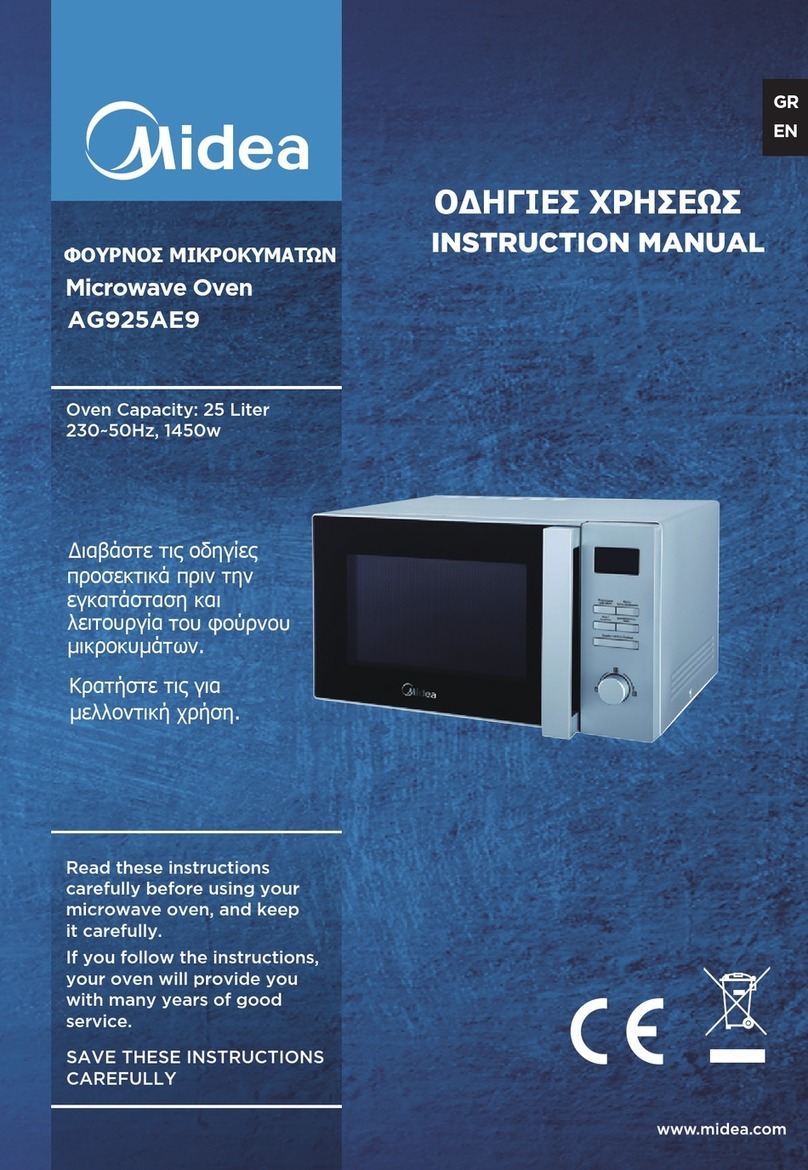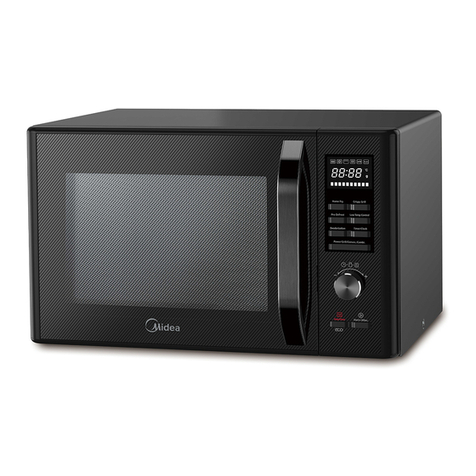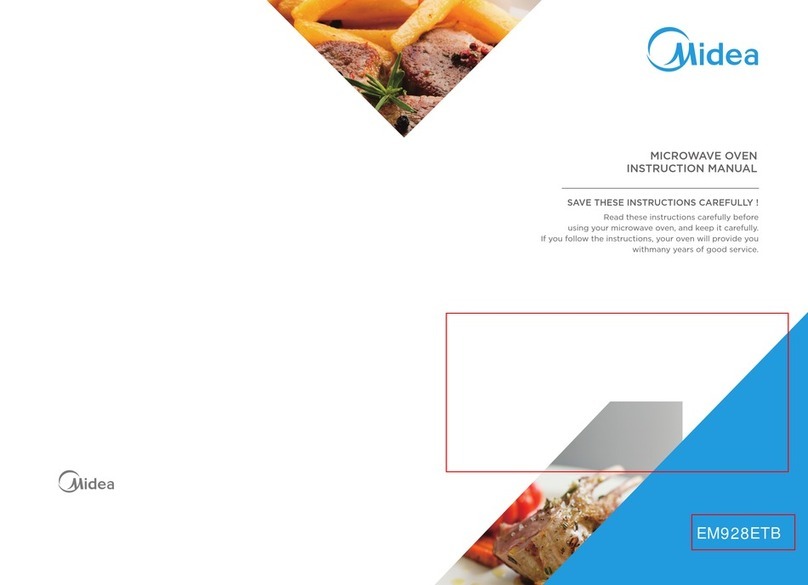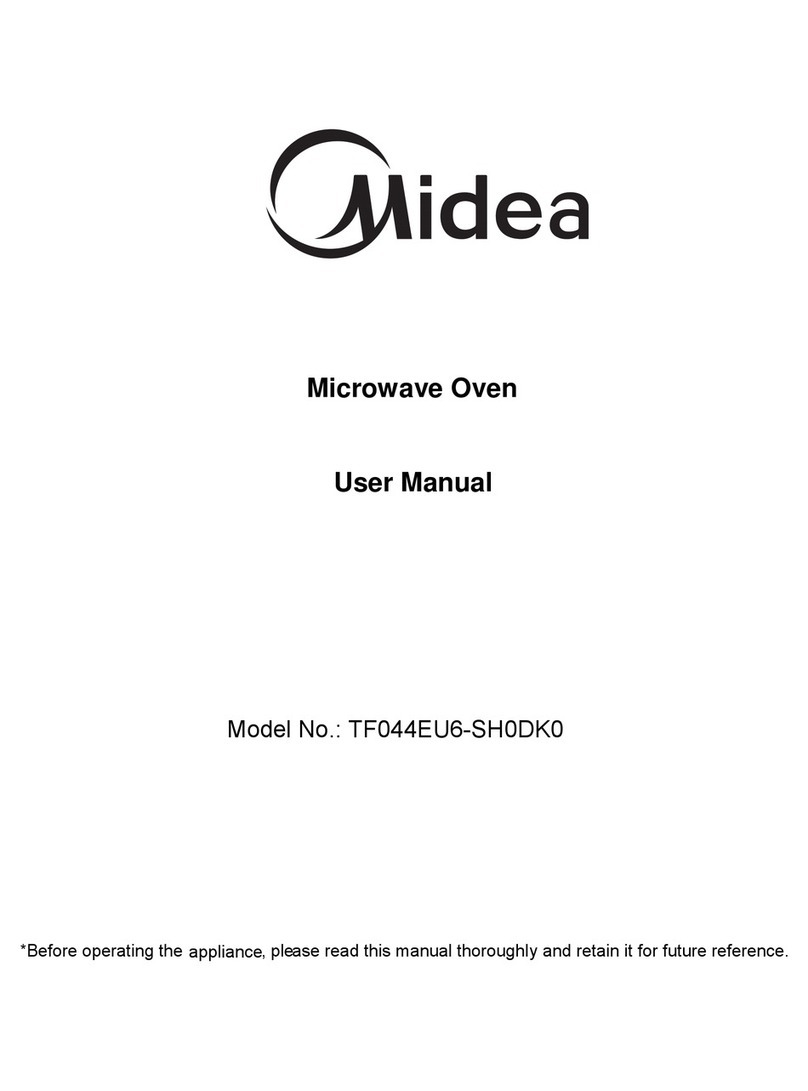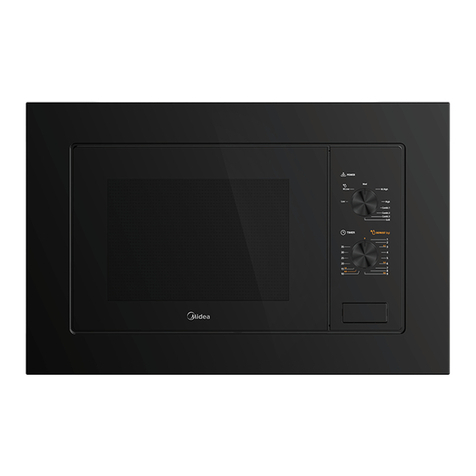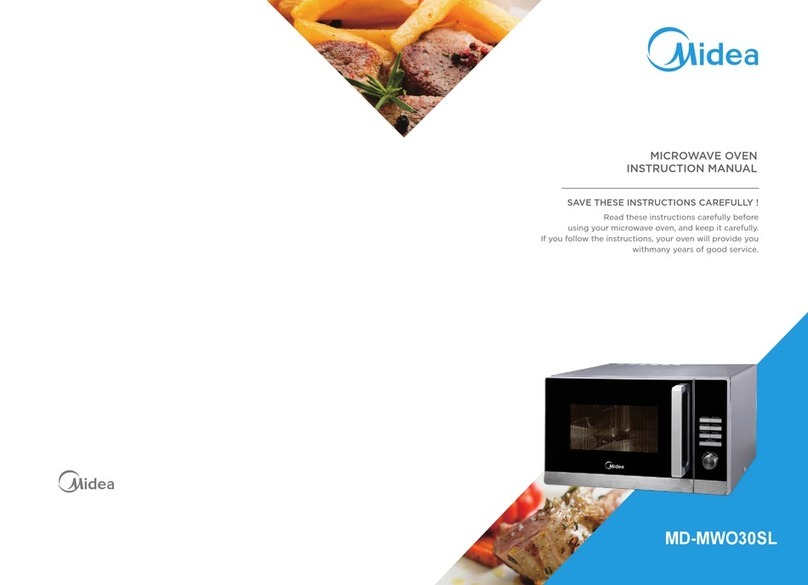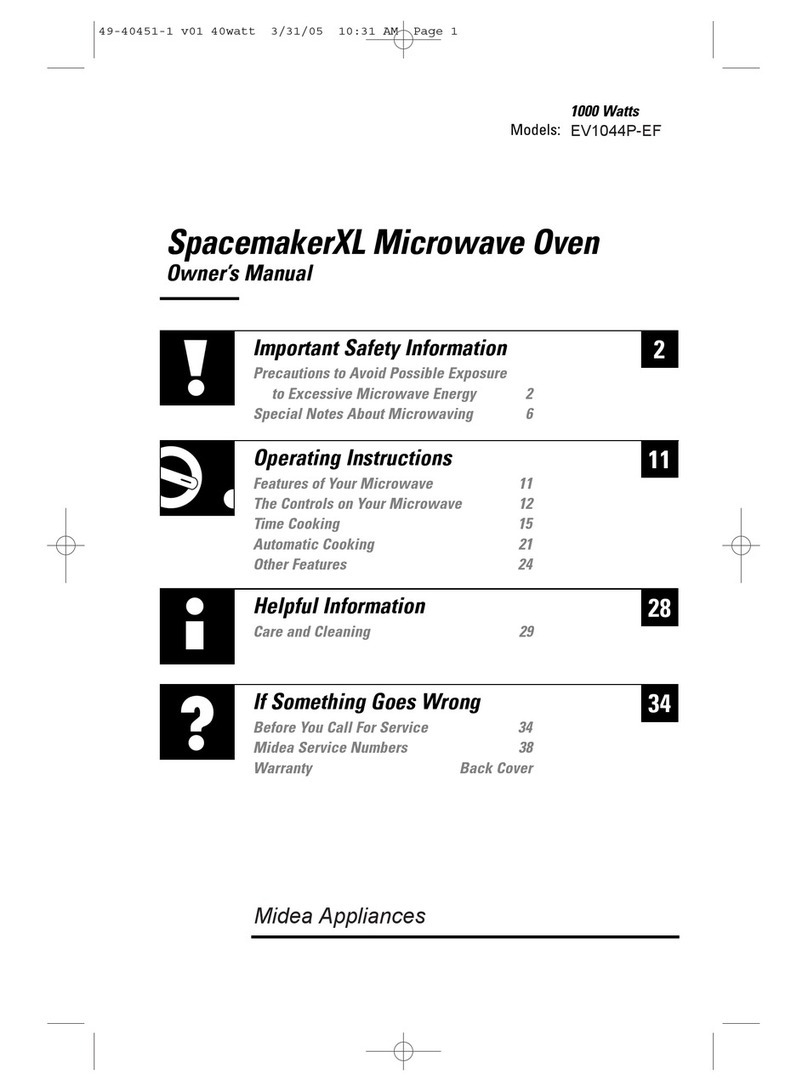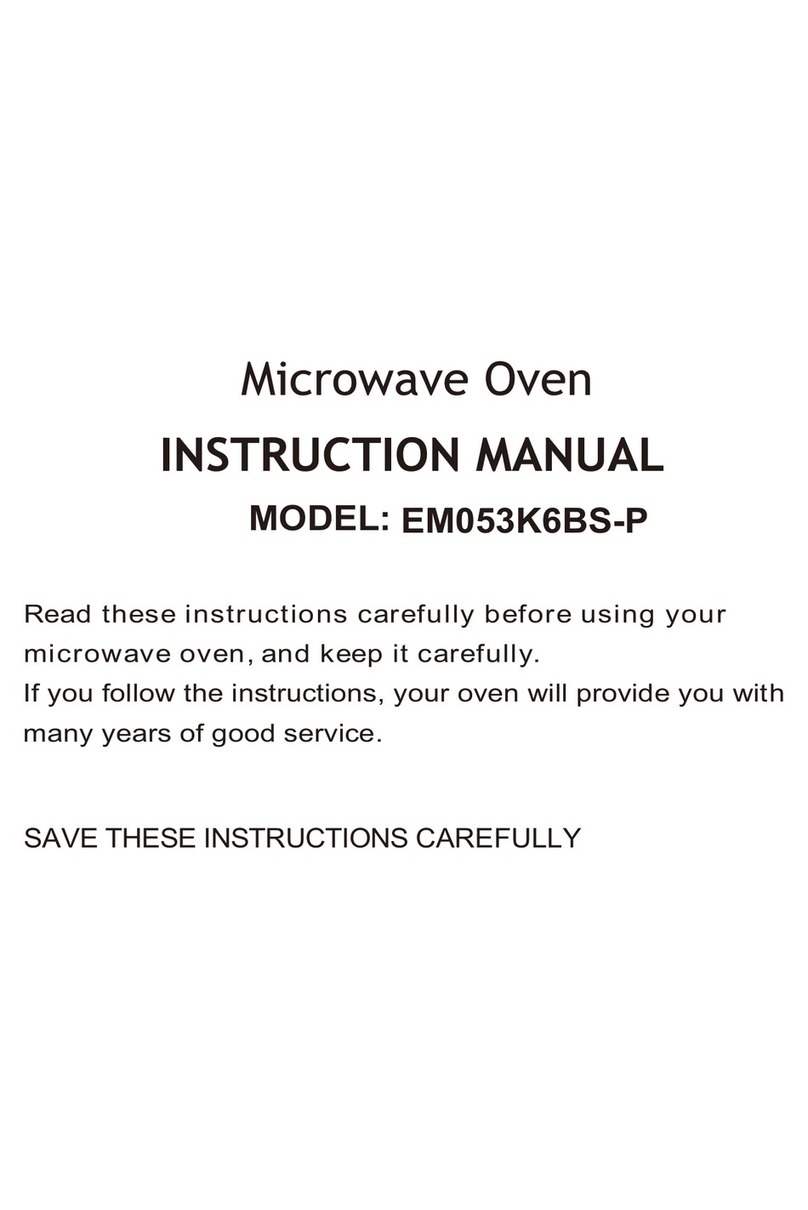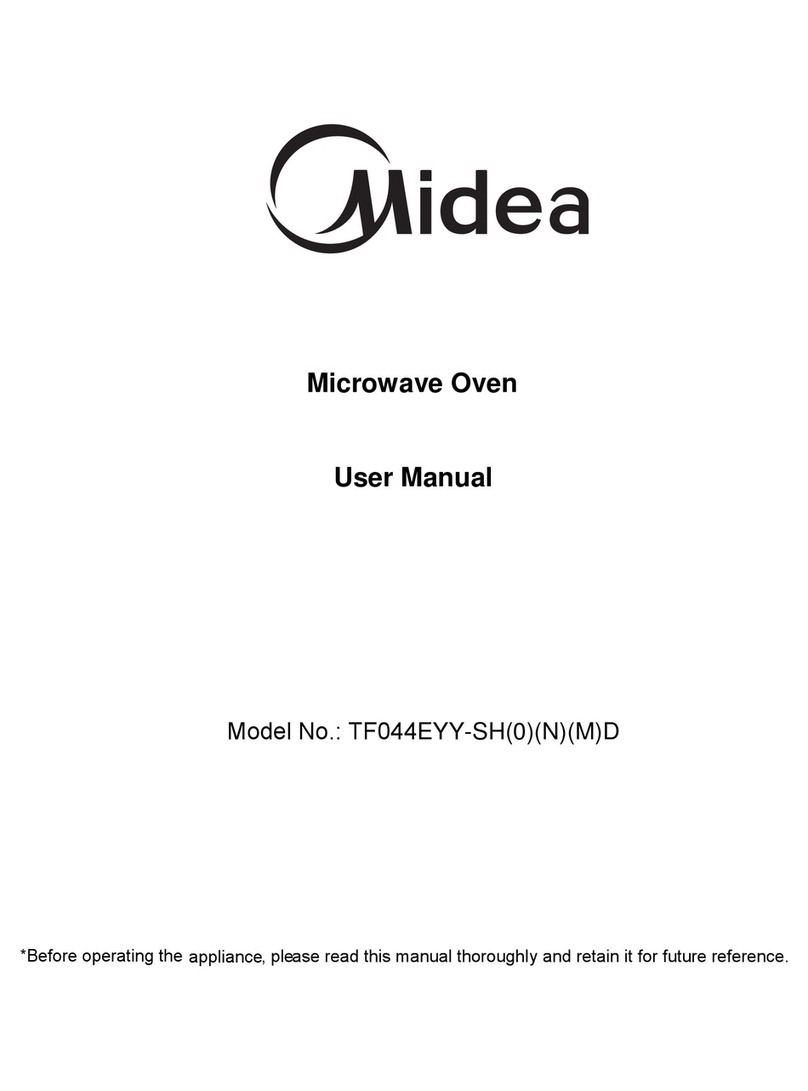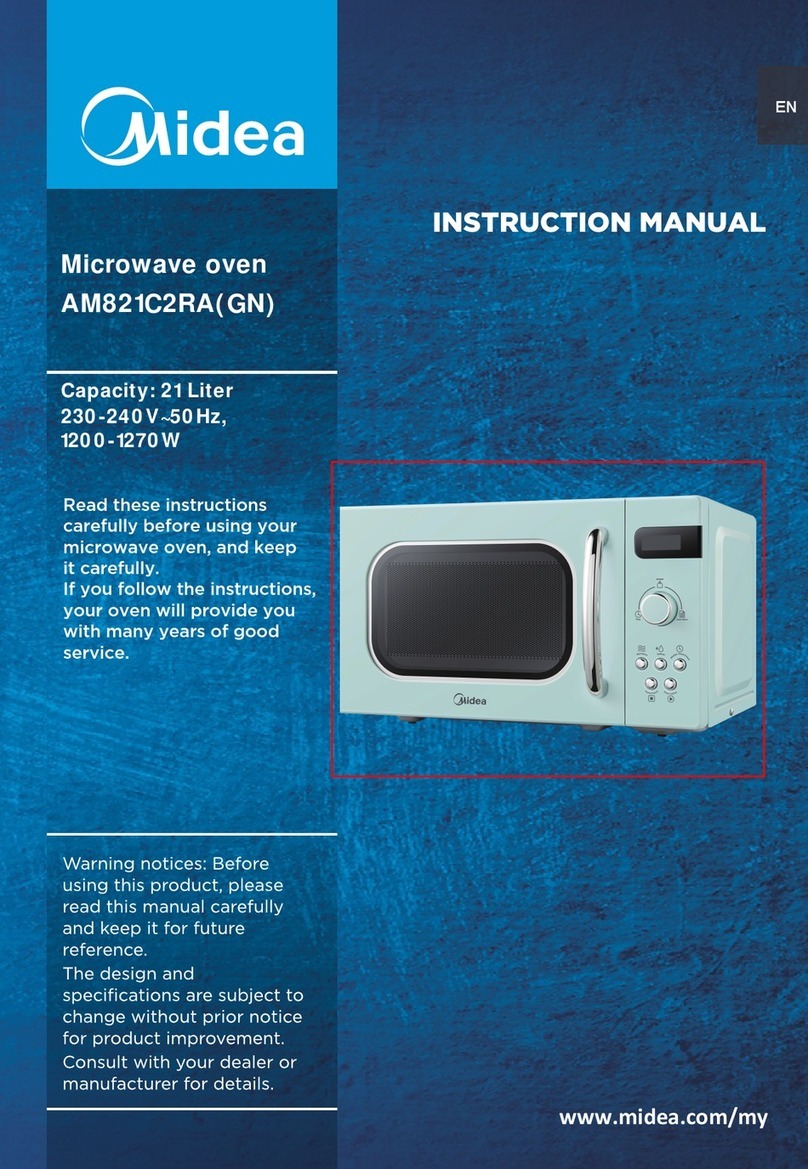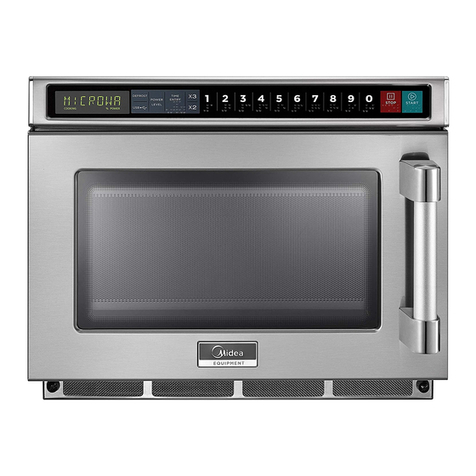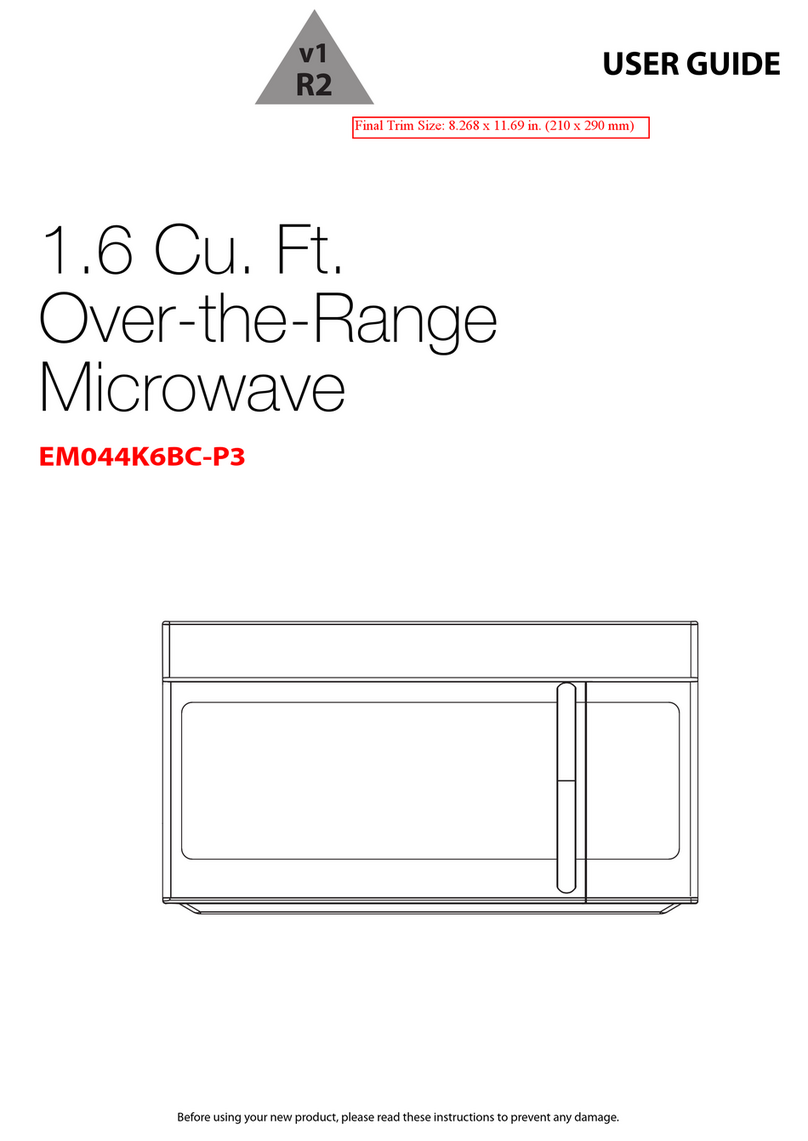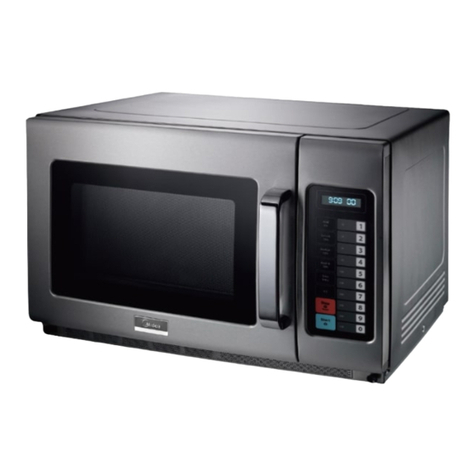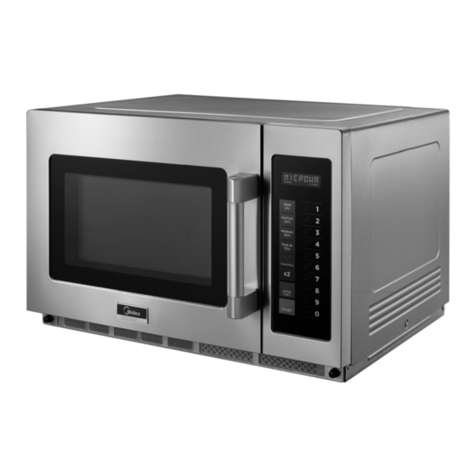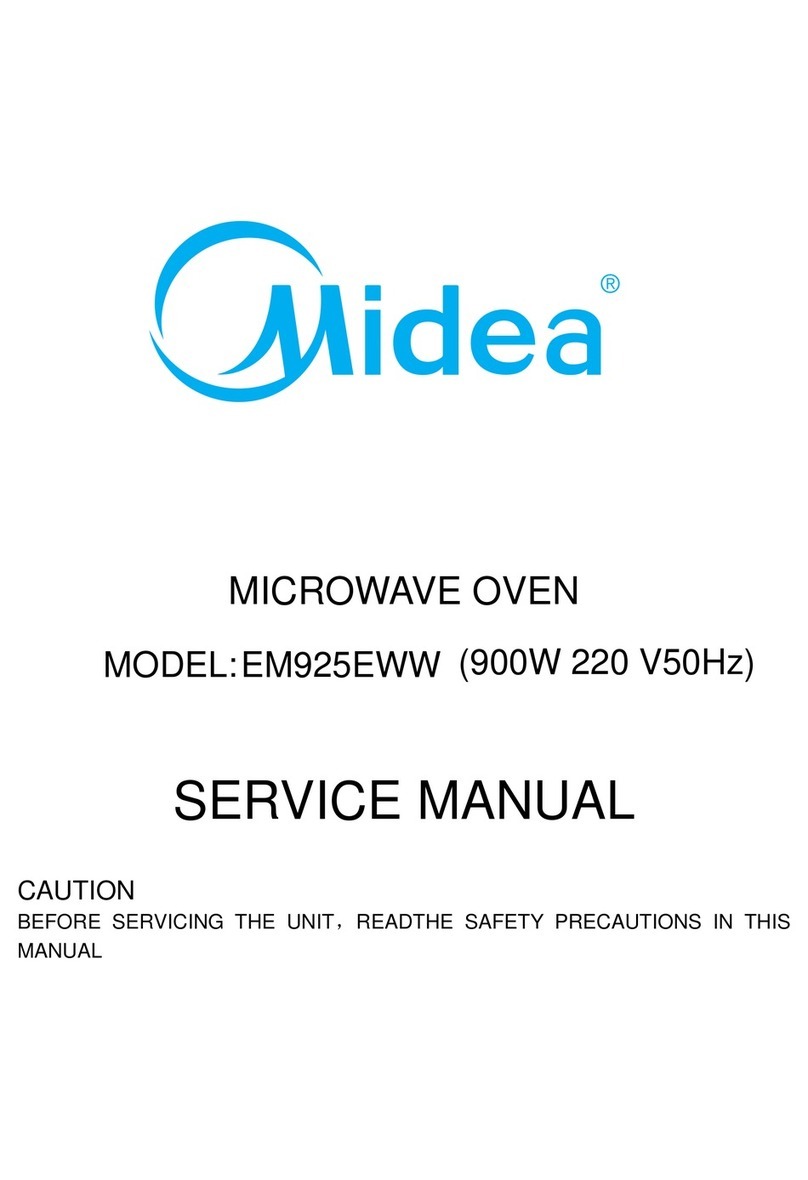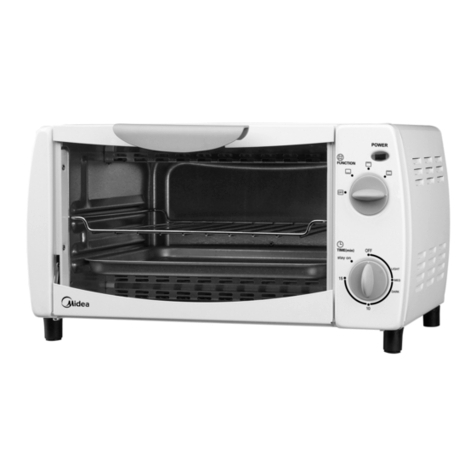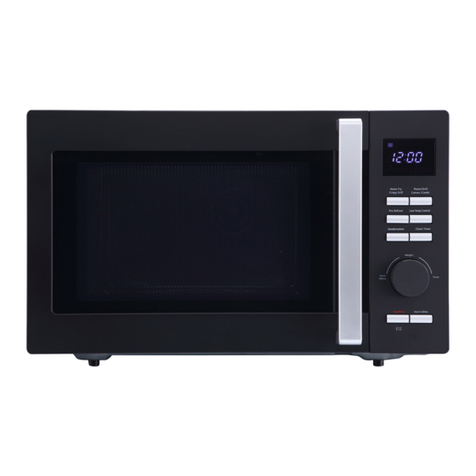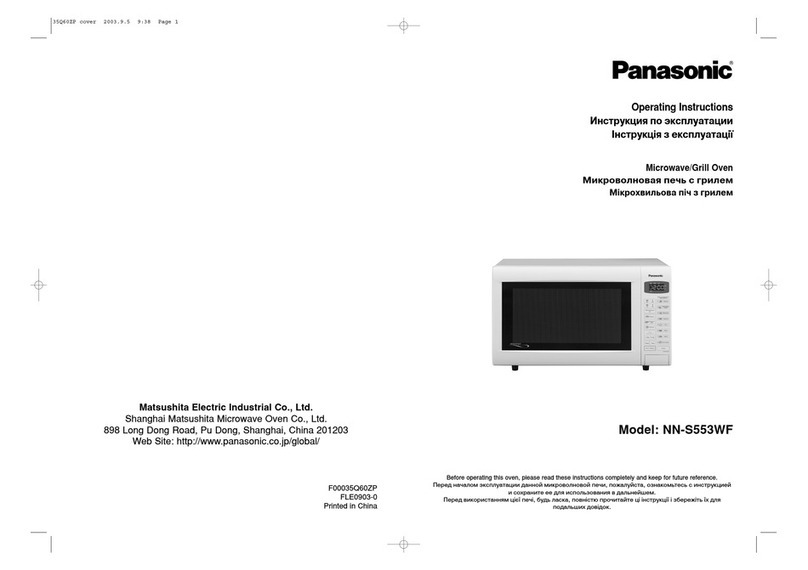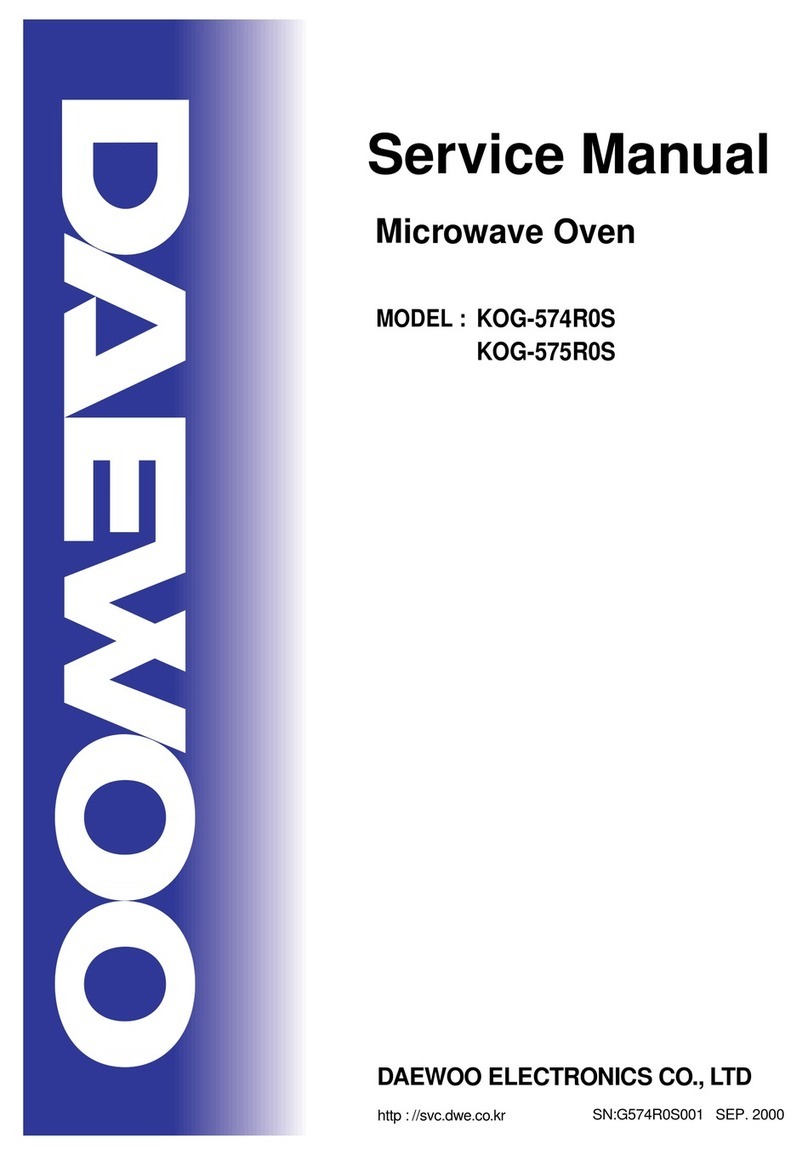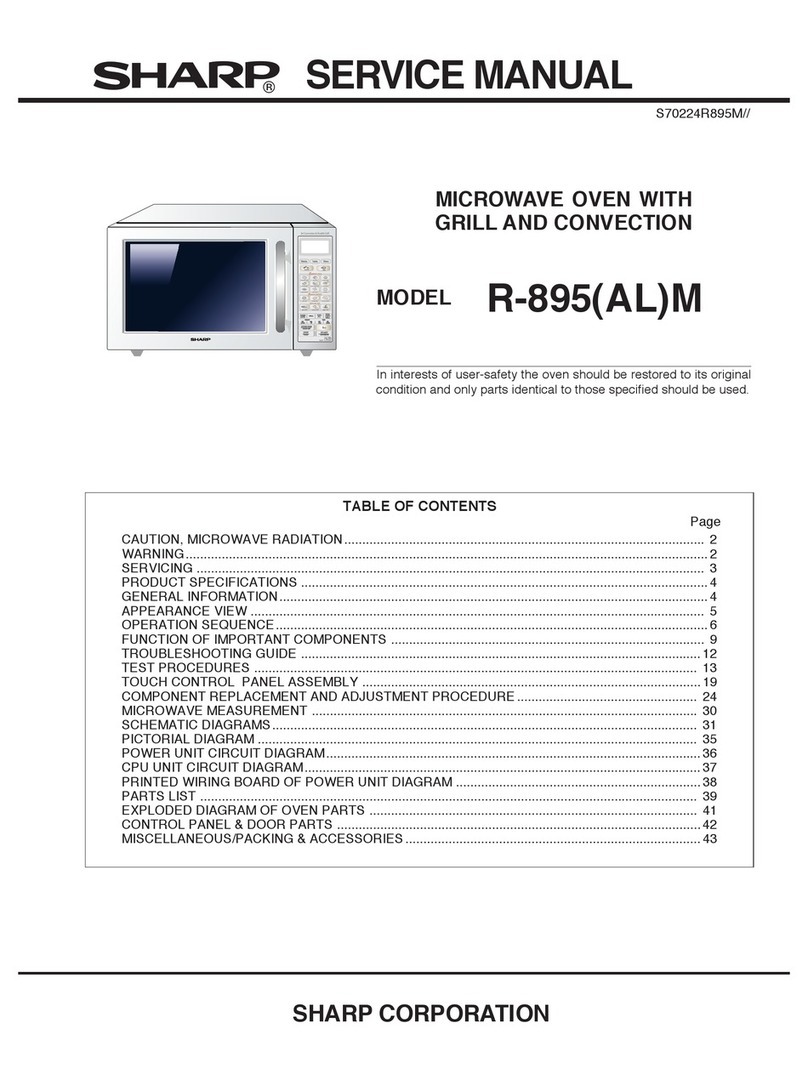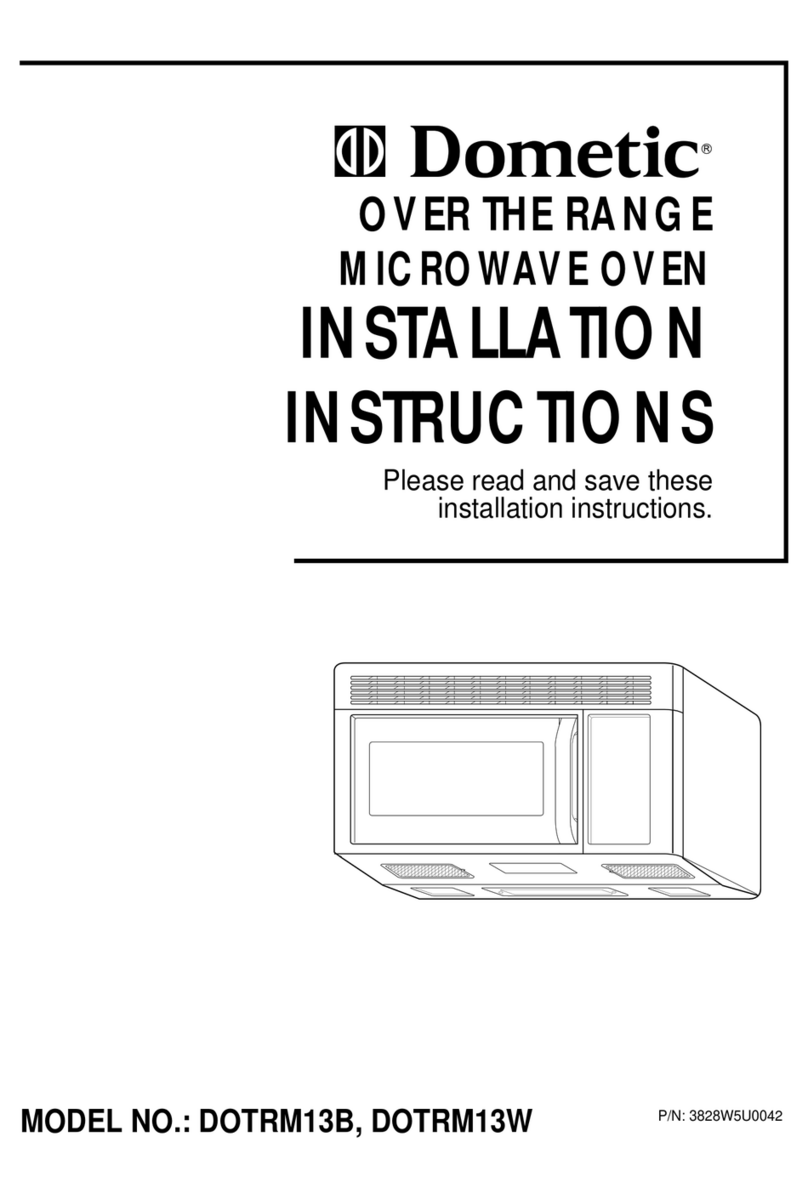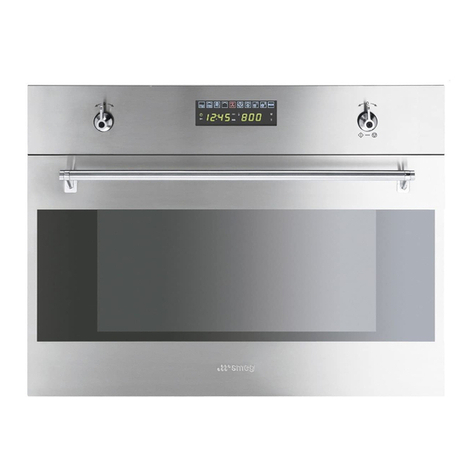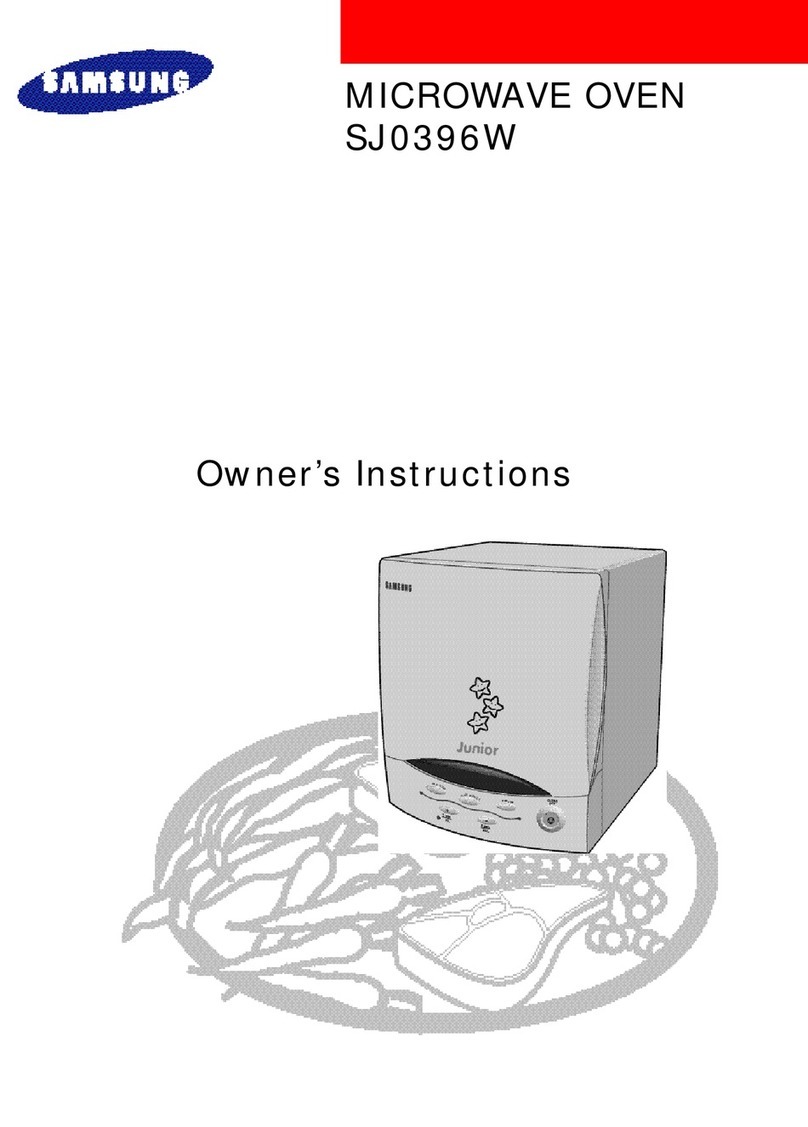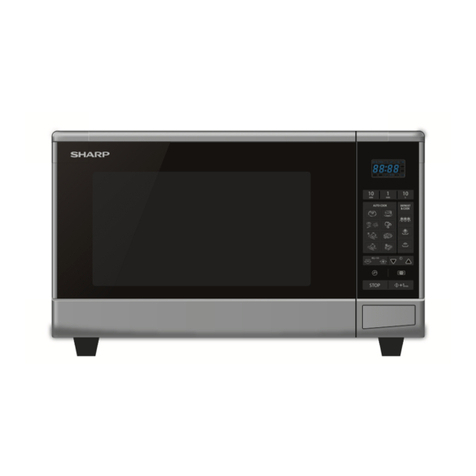GROUNDING INSTRUCTIONS
WARNING
Improper use of the grounding can result in a risk of electric
shock. Consult a qualified electrician or serviceman if the
grounding instruc�ons are not completely understood, or if
doubt exists as to whether the appliance is properly grounded. If
it is necessary to use an extension cord, use only a 3-wire
extension cord that has a 3-blade grounded plug, and 3-slot
receptacle that will accept the plug on the appliance. The
marked ra�ng of the extension cord shall be equal to or greater
than the electrical ra�ng of the appliance.
Electric Shock Hazard:
Touching some of the internal components can cause serious
personal injury or death. Do not disassemble this appliance.
WARNING
Electric Shock Hazard:
Improper use of the grounding can result in electric shock.
1. A short power-supply cord is provided to reduce the risks
resul�ng from becoming entangled in or tripping over a longer
cord.
2. Longer cord sets, or extension cords, are not recommended.
3. If a long cord or extension cord is used:
(a) The marked electrical ra�ng of the cord set or extension
cord should be at least as great as the electrical ra�ng of the
appliance.
(b) The extension cord must be a grounding-type 3-wire cord.
(c) The longer cord should be arranged so that it will not drape
over the counter top or tabletop where it can be pulled on
by children or tripped over uninten�onally.
WARNING: IMPROPER USE OF THE GROUNDING
PLUG CAN RESULT IN A RISK OF ELECTRIC SHOCK.
Consult a qualified electrician or service person if the grounding
instructions are not completely understood, or if doubt exists as to
whether the appliance is properly grounded.
Grounding Instructions
THIS APPLIANCE MUST BE GROUNDED.
3.
The VOLTAGE used must be the same as specified on this
microwave oven (120 V, 60 Hz).
4.
Using a higher voltage is dangerous and may result in a fire or
oven damage. Using a lower voltage will cause slowcooking.
Is NOT responsible for any damages resulting from the use of the
oven with any voltage other than specified.
In the event of an electrical
short circuit, grounding
reduces the risk of electric
shock by providing an escape
wire for the electric current.
This appliance is equipped
with a cord having a
grounding wire with a
grounding plug.
3-Pronged Plug
Ground Plug
3-Prong Receptacle
TV / RADIO/WIRELESS EQUIPMENT INTERFERENCE
This product has been tested and found to comply with the limits
or Microwave Oven, pursuant to Part 18 of the FCC Rules. This
product can radiate radio frequency energy, which could cause
interference to such products as radio, TV, baby monitor,
cordless phone, Bluetooth, wireless router, etc., which can be
confirmed by turning this product off and on. If present, the user
The plug must be plugged into an outlet that is properly installed
and grounded.
•
Plug into properly installed and grounded three-prong
outlet.
•
DONOT
remove ground prong.
•
DO NOT
use an adapter.
Wiring Requirements
1.
The oven must be operated on a DEDICATED CIRCUIT. No other
appliance should share the circuit with the microwave oven.
If it does, the branch circuit fuse may blow or thecircuit
breaker maytrip.
2.
Theovenmustbepluggedintoatleasta20A,120V,60 Hz
GROUNDED OUTLET. Where a standard two-prong outlet is
encountered, it is the personal responsibility and obligation of
the consumer to have it replaced with a properly grounded
three- prong outlet.
is encouraged to try to correct by taking one or more of the
following countermeasures:
(1)
Increase the spacing distance between the microwave oven
and other product receiving the interference.
(2)
If possible, use a properly installed receiver antenna and/or
reorient the receiving antenna of the other product receiving
the interference.
(3)
Plug the microwave oven into a different outlet from the other
product receiving the interference.
(4)
Clean door and sealing surfaces of the oven. (See Care and
Cleaning of Your Microwave Oven)
